In the Beginning
Origins of the
Washington Artillery

by Glen C. Cangelosi,
M. D.
copyright 2008
Frenchman
Jean Baptiste le Moyne, Sieur de Bienville founded New Orleans in 1718 as a
settlement in the French territory known as Louisiana.
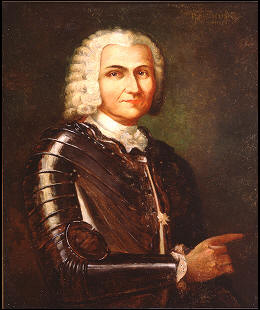
Jean
Baptiste le Moyne, Sieur de Bienville
Bienville named
New Orleans in honor of
the Duc d’Orleans, then regent of the kingdom. It became the capital of
Louisiana in 1722, the same year engineer Le Blond de la Tour plotted a simple
gridiron of streets later to be known as the French Quarters and, eventually,
the French Quarter.
Bienville’s successor, Etienne de Perier de
Cenier, a lieutenant in the king’s army, inherited the colony from him in a
state of turmoil. There were internal problems involving supply shortages as
well as external problems involving threats from the surrounding American Indian
tribes. The latter threats may have been the stimulus for Governor Perier
(1726-1733) organizing Louisiana’s earliest known militia unit called the
“Compagnie de Milice de la Louisiane” (Militia Company of Louisiana) to
supplement the limited number of regular troops of the French army stationed
there. This militia unit was composed of infantry, cavalry and artillery.
Perier’s fear was intensified in 1729 when two hundred and fifty colonists were
massacred by the Natchez Indians at Fort Rosalie (now Natchez, Mississippi), an
act that created a state of panic in New Orleans. In response, Perier ordered
the construction of city defenses- a moat and ramparts (now Rampart Street in
New Orleans) and even issued arms to his citizens for added protection.
In 1730 this Compagnie de Milice de la
Louisiane marched off with French troops to take revenge on the Natchez Indians.
The unit returned to New Orleans victorious; its commander, Captain S. R. de
Laye, wounded in action, returned as a hero. But the American Indians remained
a concern for those early French colonists in 18th century Louisiana,
and Louisiana’s militia was needed in 1736 to fight the Chickasaw tribe, and
again in 1739 against the Choctaw.
The Louisiana militia was expanded in 1753 to
four companies and reorganized into the larger “Battalion de Milice de la
Louisiane”(Militia Battalion of Louisiana). Following the end of the “Seven
Years War” in 1763, France lost Canada and her other North American colonial
possessions. Canada and that part of Louisiana lying east of the Mississippi
River were relinquished to the British. Anxious to rid France of the remaining
American colony, King Louis XV ceded the rest of her colonial possessions, which
included the land west of the Mississippi River and the city of New Orleans, in
a secret treaty to his Spanish cousin King Charles III on November 3, 1762. The
Battalion de Milice de la Louisiane was present when the French finally turned
over the territory to the Spanish the following year, taking part in the
welcoming ceremonies of Spanish governor-general Don Alejandro O’Reilly.
O’Reilly, one of Charles III’s favorite generals, was strangely enough an
Irishman!
O’Reilly quickly established the Cabildo as the
seat of Spanish government, proclaimed Luis de Unzaga as governor of Louisiana
and then took charge of establishing military order. Seeing the benefit of a
trained local militia to supplement his regular troops, O’ Reilly organized his
own militia in 1770 called “El Regimento Infanteria de Luisiana” (The Infantry
Regiment of Louisiana). In need of qualified members, he called upon the French
members of the defunct Battalion de Milice de la Louisiane. They obliged him
and were accepted as the “Segundo Batallon” (Second Battalion) of the Spanish
militia. These Frenchmen included infantry soldiers as well as a company of
artillerists, the latter group under the name of “Compania Artilleria”.
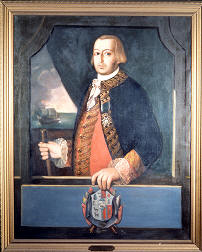
Don Bernardo de Galvez
In 1778 Louisiana’s Spanish governor, Don
Bernardo de Galvez, relaxed trade restrictions to allow the Americans in New
Orleans to supply their troops in the Atlantic colonies in their fight against
Britain during the American Revolution. Galvez, anticipating Spain’s entry into
the war, sent the Second Battalion to successfully fight the British during
expeditions at Manchac, Baton Rouge, Natchez, Mobile, and Pensacola. Their
commander was Don Pedro Favrot of New Orleans. Strangely enough, this early
ancestor of the Washington Artillery took part against the British during the
American Revolution, but under a Spanish flag! Following the revolution, this
same Second Battalion, Infantry Regiment of Louisiana is recorded in the 1781
Spanish plans for the defense of New Orleans and included the artillery unit
“Compania Artilleria”. The militia unit continued to drill until 1803 when
Spain ceded Louisiana back to France, who in turn ruled for only 20 days until
the Louisiana Purchase was completed, turning the territory over to the United
States. By 1803 the Second Battalion’s members were composed of both French and
Spanish New Orleanians.
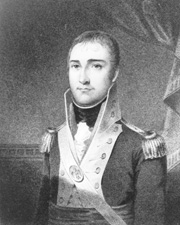
William C. C. Claiborne
The transfer of land from France
in 1803 enlarged the United States by more than its size at that time and the
great province of Louisiana became the largest territory of the nation.
Louisiana’s first governor, William C. C. Claiborne, recognized the need for
well-organized troops. He was instrumental in organizing a volunteer militia,
especially of American citizens. On April 10, 1805 Claiborne approved an act for
“regulating and governing the militia of the territory of Orleans.”
In 1808 the British threatened another invasion. Louisiana appropriated
$200,000 for the organization of the militia and in 1813 an act authorized that
“all able-bodied citizens between the ages of 16 and 50 years should be subject
to military duty.” Men flocked to the enlistment stations, ready to defend their
homeland.
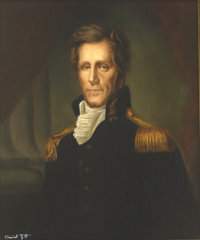
Andrew Jackson
When the War of 1812 erupted, General Andrew
Jackson followed the actions of his predecessors by calling once again upon the
local militia. Artillery members of the old Compania Artilleria, Segundo
Battalion, Regimento Infanteria de la Louisiane offered their services to the
American government. They were composed of two companies and became part of the
newly organized Battalion of New Orleans Volunteers militia. This unit was
federalized in 1814 just in time to fight with Jackson’s troops in the trenches
outside New Orleans against the British during the famous Battle of New Orleans
on January 8, 1815. (Although the Treaty of Ghent had been signed previous to
the battle, British General Packenham did not receive the news in time.) The
names of these two individual artillery companies have yet to be documented.
.jpg)
George Washington
The War of 1812 was followed by over 30 years
of peace. When the first official American militia was formed in Louisiana
following that war, the two artillery companies of the Battalion of New Orleans
Volunteers became part of it. Quite possibly, this is when one of those
artillery companies chose the name “Washington”, in honor of George Washington.
This choice of name was quite popular during the early 19th century
because when George Washington died in 1799 his legend still reigned across
America. His birthday was a day of celebration in which militia units throughout
the country paraded. Therefore, sometime between 1814 and 1819 one of the
artillery units of the Battalion of New Orleans Volunteers changed its name to
the Washington Artillery. Newspaper accounts in 1819 reflect the earliest known
use of the name “Washington” with one of these artillery companies. The
Louisiana Courrier, dated January 11, 1819, reported that on the anniversary
of the Battle of New Orleans on January 8th the governor of the state
reviewed local militia companies. Among the military units listed was the
Washington Artillery (foot), Captain W. Ward commanding.
.jpg)
Later that year,
The Orleans Gazette and Commercial Advertiser newspaper published a
notice dated November 26, 1819 that “Washington Artillerists … assemble in front
of the Presbyterian Church, in full uniform, at 2 o’clock.” (C. Willard
commanding)
.jpg)
(courtesy Robert
& Linda Melancon)
In February, 1821, the governor of Louisiana
was authorized by the legislature to buy four 4-pounder cannon with carriages,
for the use by New Orleans militia uniformed organizations. Each of these units
were required by law to drill at least once per month. It was this same year
that a new militia unit called the Louisiana Legion was organized. “Legion”*
simply meant a military unit composed of four companies, each organized with
infantry, cavalry, and artillery. (*footnote-Actually, the term “legion” dates
back to Roman times when it designated a military unit of 1000 men, composed of
landowners only, and was derived from the Latin word meaning “conscription”. As
with its American counterpart, it was composed of “citizen soldiers” concerned
with protecting their homeland and property.) The two artillery companies of the
older Battalion of New Orleans Volunteers, one of which was known as the
Washington Artillery, merged to become the fourth company of this new legion.
This newly consolidated artillery company, the Washington Artillery, was housed
in the rear of the Cabildo. The lattice ironwork of the balcony still displays
the initials “L. L.” (Louisiana Legion) along with the flaming bomb, a symbol of
artillery. This was the earliest known armory of the Washington Artillery.
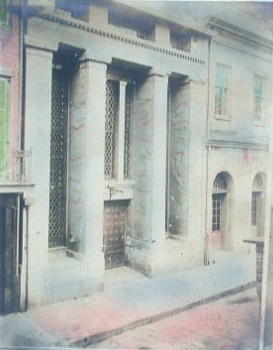
Arsenal behind the Cabildo
In keeping with its status amongst the
community, the Washington Artillery was given the honor of firing a cannon
salute and forming the honor guard when the Marquis de Lafayette, fighting
companion of George Washington in the American Revolution, visited New Orleans
in 1825.
This early history of the Louisiana militia
gives some background into the lineage of the well-documented days of the
Washington Artillery and lays the foundation for further research in documenting
the true official organizational date of this military unit. By viewing the
evidence of overlapping continuity of personnel from each reorganized and
renamed artillery unit, the ancestry and lineage of the Washington Artillery is
evident. With this proud background, it is also quite apparent why pride in this
organization drew new members from the social elite of New Orleans year after
year and why when asked many Washington Artillerists would say, “Washington
Artillery wasn’t named after George Washington. He was named after us!”
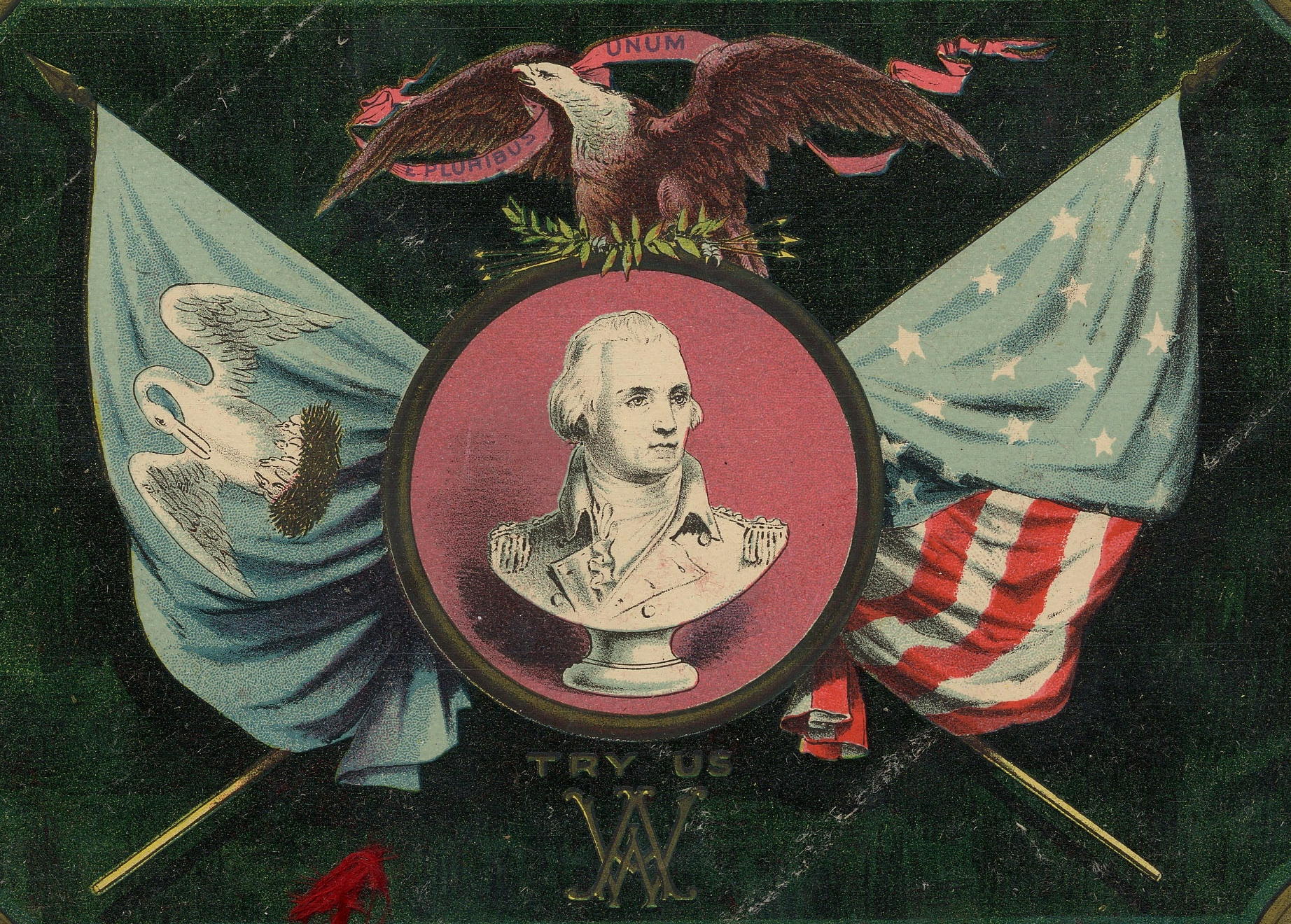
HOME